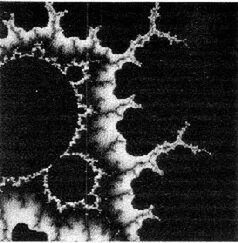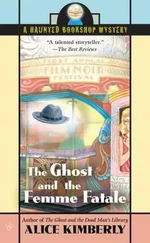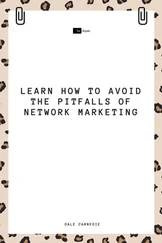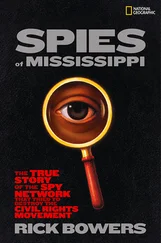On the other hand, the Situationists felt the need to stay abreast of popular culture so they could détourn it. As Odile Passot puts it in the Afterword to Semiotext(e)’s translation of Bernstein’s first novel All the King’s Horses , “the Situationists themselves were avid spectators, especially of certain films.” In the early years of the SI, when they still talked about building cities, Debord, Bernstein, and Constant discussed using mass-cultural tropes to create Situationist desires in the public. They also discussed the problematic hierarchy between “high” and “low” culture, ultimately disavowing the idea of highbrow versus lowbrow, which indirectly endorses the pop culture in general. p
Molly Metro considered the Situationists’ two-faced relationship with pop culture an important part of their ultimate aesthetic failure. She concluded that their semi-disavowal of mass culture was what relegated them to the fringes forever. To truly shift the desires of the public, you had to be a global figure that didn’t have to face term limits. As a budding singer-songwriter, Molly concluded that in order to create a Situationist world, one would first have to become a pop star, a one-woman “active force.” This is part of what makes her disappearance so baffling. If her ultimate goal, as she wrote several times in the notebook Taer perused and copied from, was to finish the work Debord and Constant never completed by remaking the world in a Situationist image, why did she disappear at the height of her powers?
To begin realizing her Situationist goals, Molly Metropolis first had to make herself into a star. She began working with a producer named Davin Karl, who had written and produced songs for Britney Spears and Kelly Rowland. Karl suggested she change her persona from a Fiona Apple disciple to a dance-pop artist. Molly dove into the challenge, relying heavily on détournement . To build an identity authentic in its artifice, she developed part-Britney coquettishness, combined with what Molly called a “dirty Outrun Electro synthesizers” aesthetic, combined with Freddie Mercury, combined with Holly Golightly. Although somewhat influenced by R&B, Molly worked hard to distance herself from the genre by heavily borrowing from disco instead, knowing many people at the record companies would rather lump her in with the black women who sing R&B than add her to the sable of white girls who sing pop.
Molly created a new self with a new image, the way she hoped the world would remake itself into one huge Situationist city. At the time, Molly was still adolescent, a teenager, and still discovering her identity; like so many of us during our teenage years, her personality was still in flux. Molly Metropolis was what Miranda Young wanted to be, so she became it.
As she began remaking herself into Molly Metropolis, she read about Debord’s friend Pinot. As a “Situationist Artist,” Pinot produced something called industrial paintings, which the Situationists endorsed before Pinot’s expulsion from the SI. Industrial paintings weren’t made using machines, but were created to feel repetitive and mechanic, to undermine the idea of the “unique gesture.” It was an extension of détournement and undermining of the authorship by refusing to use bylines in Internationale Situationniste . Molly decided the musical version of industrial painting was the pop song. She didn’t just allude to her influences; she invoked them bodily. She détourned . As Molly wrote in an e-mail to Berliner on October 26, 2009, “I consider the first year of my career as a sort of long term détournement experiment and what I learned is that at some point the détourned thing becomes un- détourned and just is. No doubt this is the point, and I’ve succeeded.” Though immodest, Molly Metropolis was right; she had succeeded. As media studies scholar Kate Durbin, founder of the academic journal Molly Skyscraper , puts it, during the era of her debut album Cause Célèbrety , “Molly literalized and embodied the spectacle.” q
In making herself into Molly Metropolis, she became much better at détournement than Debord or the other Situationists had been. At the time of her disappearance, Molly had already had more of an impact on the culture of the globe than the Situationists ever had, or ever would achieve.
* “Summoned” comes from Situationist Ralph Rumney’s account of the trip.
† Cyrus’s description of Cosio d’Arroscia is partially based on his examination of Rumney’s pictures, and partially based on his own visit to the small city in the summer of 2011. At the time, Cyrus was in a long-distance relationship with his partner, Woodyard. The two had spent every summer together in New York, and their summers were an important cornerstone in their relationship. Cyrus chose to spend two and half weeks in Italy finishing his book during the summer of 2011. That constituted the first time Cyrus had chosen his work over his relationship, which Woodyard considered a betrayal. Cyrus considered the trip a test. He later regretted gambling with his relationship. If he had known what would happen, he would’ve conducted himself differently, and you wouldn’t be reading this book. — CD
‡ During his trip, Cyrus took a photo of the plaque in the pub, it says, in French of course: “Guy Debord and the Situationists drank here during the founding of the Situationist International.” Cyrus also visited the nursing home that had once been the SI’s hotel, and reports that it smelled like old bandages and rotting seaweed. — CD
§ I walked the same streets as Debord and the others. Walking with them, separated only by time, was much like writing this book. Any place the Situationists had walked, so had Molly, then Taer, then me. I followed them — away from Woodyard, but toward the end of this book. [ This footnote was the last thing Cryus wrote when putting together this book. — CD ]
ǁ Simon Sadler, The Situationist City (Cambridge: MIT Press, 1998), 77.
a “Formulary for a New Urbanism” was actually first written and published in 1953, four years before the Situationist International formed, when Chtcheglov and Debord were both members of a predecessor to the Situationist International called the Letterist International. Chtcheglov was only nineteen at the time of writing, and he published the piece under his pseudonym Gilles Ivain as part of a continued effort to devalue the relevance of a single author of an idea. Although the piece received high praise when it was first published, the 1958 reprinting of the essay in the first issue Situationist journal Internationale Situationniste is what gave the essay a lasting influence and historical relevance. Think of Blondie’s 1978 hit “Hanging on the Telephone.” Many people didn’t know that song is a cover, originally written by Jack Lee and recorded in 1976 for his power pop band The Nerves. The quality of the original recording — and it really is very good — is overshadowed by the overwhelming response to the cover. Without the success of the Blondie version, it’s possible that The Nerves, and their fantastic, perpetually relevant song of universal yearning, would’ve been forgotten by all but music obsessives.
b McKenzie Wark, 50 Years of Recuperation of the Situationist International (New York: Princeton Architectural Press, 2008), 7.
c Mark Wigley, “The Great Urbanism Game,” in Architectural Design 41, No. 3 (2001): 9.
d Although the author of the piece was never identified, more likely than not Bernstein wrote it, or else she had a strong editing hand in it.
e Guy Debord, Correspondence: The Foundation of the Situationist International (June 1957–August 1960) , trans. Stuart Kendall and John McHale (Los Angeles: Semiotext(e), 2009), 12.
Читать дальше












